Unfolding the Chapters of Historic Schools in Manila
Descending into the rich history of Manila, one finds a plethora of educational institutions that have contributed significantly towards shaping societal norms, culture, and values. With strong colonial influences and post-independence evolution, historic schools in Manila tell compelling tales of Filipino education, resilience, and growth. Get ready to walk the hallowed halls of Manila’s most impressive and significant academic institutions.
1. University of Santo Tomas (UST): The Age-old Luminary

One of the historic schools in Manila Founded in 1611, UST is the oldest existing university in Asia. It was established by the Order of Preachers, more commonly known as the Dominicans. It has a rich history, surviving wars and various historical events, and it boasts a vast alumni network of illustrious figures in Philippine history. Its campus in Sampaloc, Manila, is home to significant structures like the Main Building, a designated National Historical Landmark.
Trivia Facts
- UST holds the title of the world’s largest Catholic university in terms of population on a single campus, with tens of thousands of students enrolled.
- The University of Santo Tomas served as an internment camp for enemy aliens, mostly Americans, by the Japanese soldiers during World War II.
- UST’s Main Building was the first earthquake-resistant building in the Philippines.
2. Colegio de San Juan de Letran: The Historical Melange
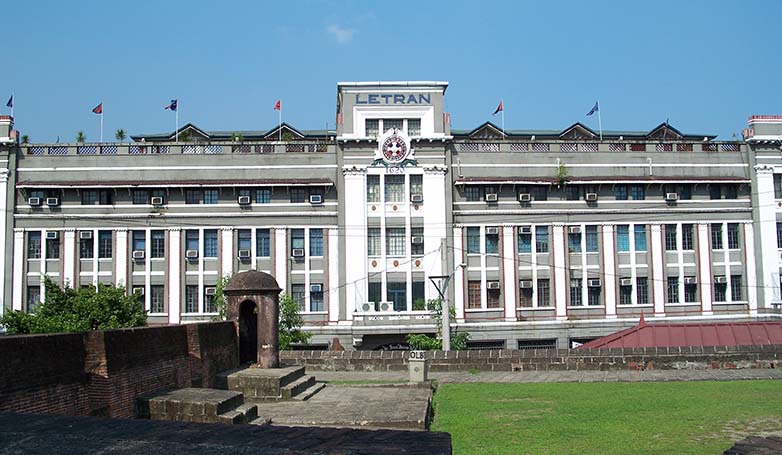
Established in 1620, Colegio de San Juan de Letran is one of the Philippines’ oldest institutions of higher learning. It has a storied past, tied closely to the nation’s colonial history and the fight for independence. The school has maintained its Baroque architecture and continues to be a significant contributor to Philippine education and society.
Trivia Facts
- Colegio de San Juan de Letran originally started as a boarding school for orphans and children of impoverished parents.
- The school’s alma mater song, “Himno de Letran,” was composed by National Artist for Music Maestro Lucio San Pedro.
- Letran is notable for its strong collegiate basketball program, having won multiple championships in the NCAA (National Collegiate Athletic Association) in the Philippines.
3. Ateneo de Manila University: The Blue-blooded Institution
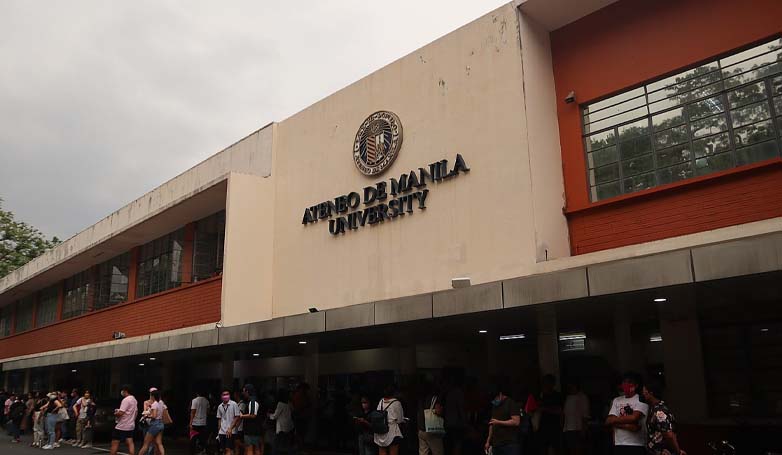
With roots dating back to 1859, the Ateneo de Manila University started as a public elementary school managed by the Society of Jesus. It has evolved into a premier private research university. Although its undergraduate and most graduate schools have moved to a larger campus in Quezon City, its origins in Manila remain a cornerstone of its historic legacy.
Trivia Facts
- Ateneo has a famous rivalry with the University of the Philippines in the UAAP (University Athletic Association of the Philippines), particularly in men’s basketball.
- The Ateneo Blue Eagle, the university’s mascot, stands as a symbol of pride and excellence.
- Among its notable alumni is Jose Rizal, the Philippines’ national hero, who attended Ateneo when it was known as Ateneo Municipal de Manila.
4. University of the Philippines: The Pride of the Nation
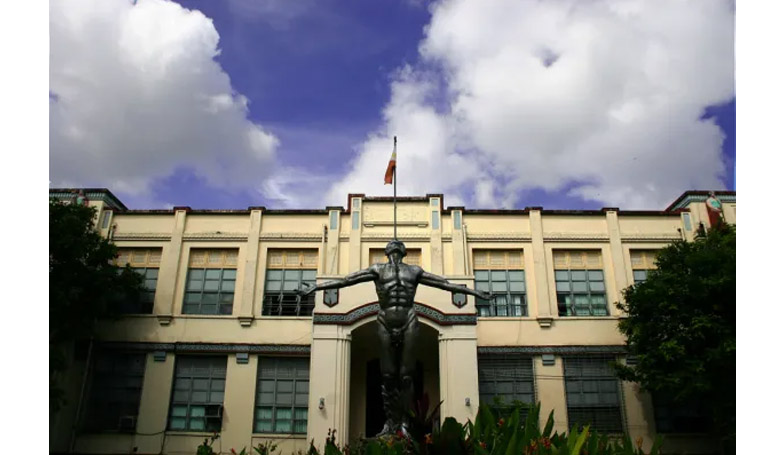
Founded in 1908, the University of the Philippines (UP) is the country’s national university. While its flagship campus is now in Diliman, Quezon City, it started in Manila with the UP College of Medicine as one of its first units. UP is known for academic excellence, activism, and its contribution to the nation’s development.
Trivia Facts
- UP has produced a large number of political leaders, including several Philippine Presidents and Senators.
- The campus is known for the Oblation statue, a symbol of selfless offering to the nation.
- The university’s annual “UP Lantern Parade” is a colorful event showcasing large lanterns designed by each college within the university.
5. Far Eastern University (FEU): The Art Deco Masterpiece
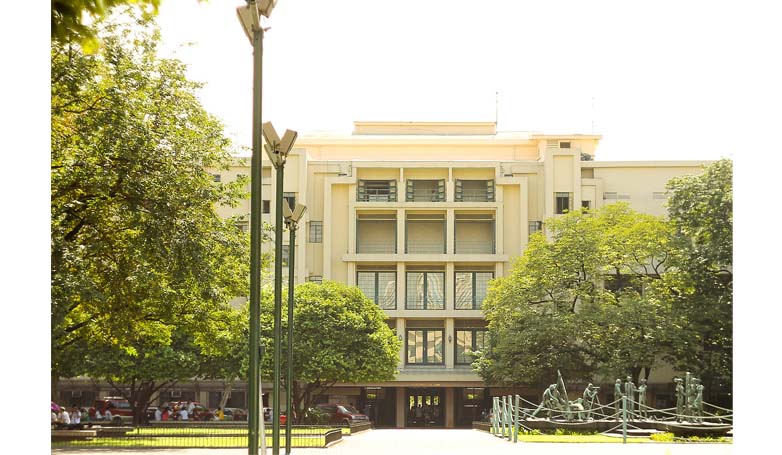
FEU was established in 1928 and is particularly renowned for its distinctive American Art Deco architecture. The campus houses several buildings designed by noted architect Pablo Antonio, which have earned the designation of National Cultural Treasure by the National Museum of the Philippines.
Trivia Facts
- FEU’s distinct architectural theme was largely influenced by Pablo S. Antonio Sr., a National Artist for Architecture.
- The university underwent rapid expansion during its initial years, absorbing several other schools.
- FEU boasts a distinct ornate gate called the Arch of the Centuries, which symbolizes its historic connection to UST, as parts of the gate originally stood at UST’s old campus.
6. Manila Central University (MCU): The Center of Excellence
Founded in 1904 as the Escuela de Farmacia del Liceo de Manila, MCU is known for its health science programs. It transitioned into a university in 1948 and is one of the well-established institutions of higher education, particularly in the field of Pharmacy and Medicine.
Trivia Facts
- MCU is known for its College of Medicine, which consistently produces graduates who excel in the country’s medical licensure examinations.
- The university established its own tertiary hospital, the MCU-FDT Medical Foundation Hospital, that not only provides medical services to the public but also serves as a hands-on training ground for its healthcare students.
- MCU’s campus is located in Caloocan City, which is part of the National Capital Region of the Philippines.
7. San Beda University: Benedictine Beacon
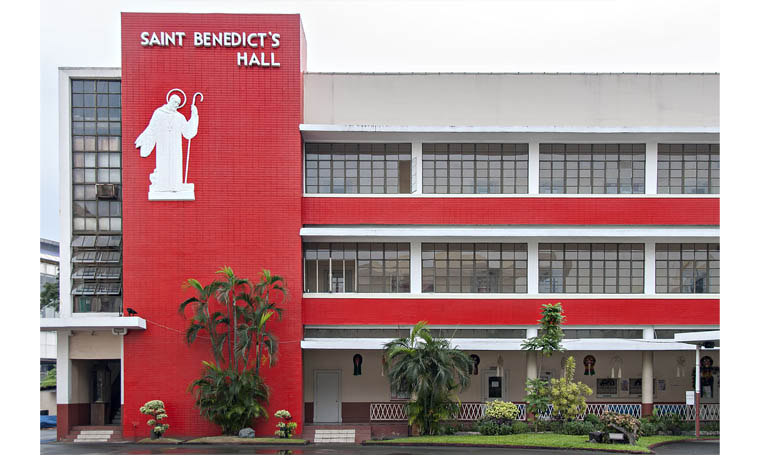
San Beda University, established by Benedictine monks in 1901, is a private Roman Catholic university. Originally an all-boys school, it has grown to include coeducational offerings and is noted for its law school, which has produced numerous prominent legal professionals and political figures in the Philippines.
Trivia Facts
- San Beda’s official motto is “Fides, Scientia, Virtus,” which translates to “Faith, Knowledge, Virtue” from Latin.
- The university’s athletic teams, known as the San Beda Red Lions, are a dominant force in the NCAA, the oldest athletic association in the Philippines.
- San Beda University’s Main Campus is part of the historic “University Belt” area in Manila, a densely populated zone with a high concentration of higher education institutions.
8. University of Manila: Manila’s Eminence

The University of Manila was founded in 1913 with a mission to cater education to the underprivileged. It offers a broad range of academic programs and has established itself as a significant institution for higher learning in the capital city.
Trivia Facts
- The institution operates under the maxim “Character Building is Nation Building,” emphasizing the role of personal character in the development of society.
- During the Japanese occupation of the Philippines in World War II, the University of Manila was one of the learning institutions permitted to continue operations and played a crucial role in maintaining education during that period.
- The university is known for its “Freedom Park,” a notable green space on campus dedicated to the expression of freedom and democracy.
9. Philippine Normal University (PNU): Teacher’s Core
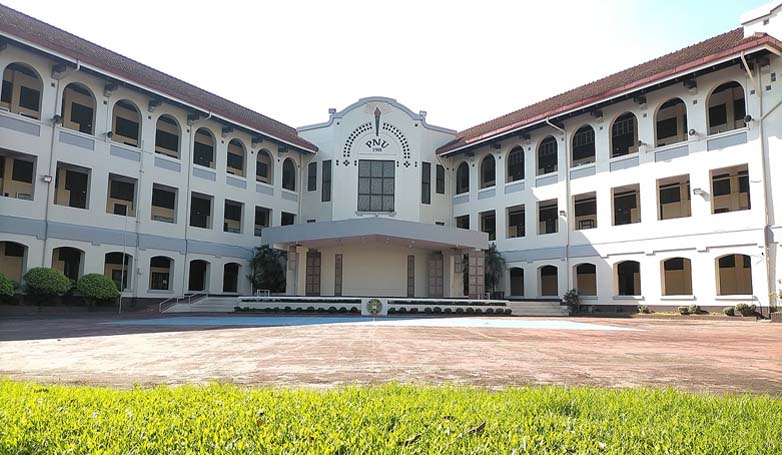
Established in 1901, PNU was originally called the Philippine Normal School. It is the first higher education institution in the country dedicated to the training of teachers. It has played a massive role in shaping the education system in the Philippines by producing generations of teachers.
Trivia Facts
- PNU holds the distinction of being the first higher education institution in the Philippines to teach the English language to its students.
- The university has expanded its reach with several branch campuses across the archipelago, including those in Luzon, Visayas, and Mindanao.
- Its main campus in Manila is designated as a National Historical Landmark by the National Historical Commission of the Philippines for its significant role in the history of education in the country.
10. Manila Science High School: The Brainchild
Manila Science High School was established in 1963 as the first science high school in the Philippines. It was created to meet the need for an education program focused on science and technology during a time of rapid scientific advancement. It has a reputation for academic excellence and for producing top performers in various fields, including science and technology.
Trivia Facts
- Manila Science High School was initially located within the campus of Araullo High School before transferring to its permanent site on Taft Avenue, Manila.
- MaSci’s official school publication is “The Science Scholar,” which showcases students’ journalistic talents and is a platform for scientific discussions and insights.
- Alumni of Manila Science High School are commonly referred to as “MaScians,” and they have formed a strong network across various industries and disciplines, contributing significantly to the nation’s development in science and technology.
The Final Bell: A Reflection on the Halls of Knowledge
Each of these historic schools in Manila warmly embraces the past while optimistically looking towards a progressive future. These institutions collectively represent the soul of Manila, fostering a promising culture and shaping the minds of Filipino generations for centuries. Join us as we appreciate and celebrate the resilient spirit of Manila through its esteemed bastions of learning.
Historic Schools in Manila, Philippines FAQ
Here are the most common questions about the historic schools in Manila, Philippines.
1. What roles have these schools played in Filipino history?
These historic schools in Manila have been at the forefront of education and societal development in the Philippines, producing leaders, scholars, professionals, and advocates who have contributed significantly to various fields, such as politics, science, arts, and religion. They have also been venues for critical historical events, like the University of Santo Tomas serving as an internment camp during World War II.
2. How have these historic schools in Manila influenced Filipino culture?
These schools have deeply influenced Filipino culture through the promotion of arts, literature, and sciences as well as by preserving and innovating upon traditional Filipino customs and values within their academic curricula. They also contribute to cultural development through various community programs, publications, and the hosting of cultural events.
3. Can tourists visit these historic schools in Manila?
Tourists may visit these schools, but policies on public access may vary. Some campuses may offer guided tours, have museums, or organize events open to the public. It is advisable to check with the institution’s administration for any visitor guidelines or restrictions.
4. What are the common challenges faced by historic schools in Manila?
Challenges faced by historic schools in Manila include modernization pressures, maintaining old structures, adapting to contemporary educational standards, balancing the preservation of tradition with innovation, and sometimes, the threat of natural disasters such as earthquakes and typhoons due to the Philippines’ geographic location.
5. Do these historic schools in Manila offer programs focused on history or preservation?
Yes, several historic schools in Manila offer programs focused on history, cultural heritage, and preservation, often through their Departments of History, Cultural Studies, or Architecture. Some have specialized centers and institutes dedicated to the study and preservation of Philippine history and culture.












